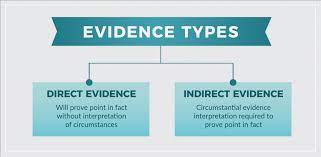-
Best Australian Pokies Best Payout
Play Free 777 Pokies Online
What Are the Best Australian Pokies to Win Big On
What Are the Best Online Pokies with Low Minimum Deposits for Real Money in Australia
New Australian Pokies Accepting PayID
What Are the Best Strategies to Win in Online Pokies with Bonus Rounds in Australia
Tips for Winning Top Australian Pokies
What Online Casinos Offer Free Play Pokies with Welcome Bonuses in Australia
Australian Slot Games
Payout Ratio Pokies with Welcome Bonus

For your instructor-provided Unit 4 Reading, please identify three pieces of evidence and then answer the following questions so that you can determine how the author has supported the claim.
Please identify three pieces of evidence
Critical Evaluation Planner
Part 1: Argument and Evidence
Summary Elements
For your instructor-provided Unit 4 Reading, please answer the following questions in order to summarize the author’s argument.
1. Article information:
a. Author-
b. Title-
c. Source (Title of Magazine, Newspaper, Journal, or Website)-
d. Publication Date-
2. Topic:
3. Author’s claim:
4. Main points from article:
a.
b.
c.
Evidence
For your instructor-provided Unit 4 Reading, please identify three pieces of evidence and then answer the following questions so that you can determine how the author has supported the claim. (Note: The article likely has more than three pieces of evidence, but for the purpose of this planning document, you are just required to identify three.)
Evidence 1
1. Type out the evidence in the form of a direct quote from the article. Include an APA parenthetical citation:
Example: “Quote the evidence directly and include citation,” (Smith, 2021, para. 5).
2. Identify the type of evidence it is (i.e., facts, statistics, expert testimony, etc.).
3. Identify the persuasive appeal (logos, pathos, or ethos).
4. Evaluate the evidence in terms of relevance, accuracy, and credibility. Explain.
Evidence 2
5. Type out the evidence in the form of a direct quote from the article. Include an APA parenthetical citation:
Example: “Quote the evidence directly and include citation,” (Smith, 2021, para. 5).
6. Identify the type of evidence it is (i.e., facts, statistics, expert testimony, etc.).
7. Identify the persuasive appeal (logos, pathos, or ethos).
8. Evaluate the evidence in terms of relevance, accuracy, and credibility. Explain.
Evidence 3
9. Type out the evidence in the form of a direct quote from the article. Include an APA parenthetical citation:
Example: “Quote the evidence directly and include citation,” (Smith, 2021, para. 5).
10. Identify the type of evidence it is (i.e., facts, statistics, expert testimony, etc.).
11. Identify the persuasive appeal (logos, pathos, or ethos).
12. Evaluate the evidence in terms of relevance, accuracy, and credibility. Explain.
Fallacies
For your instructor-provided Unit 4 Reading, identify and evaluate two weaknesses in the author’s logic.
Weakness or Fallacy 1
1. Type out the weakness or fallacy in the form of a direct quote from the article. Include an APA parenthetical citation:
Example: “Quote the weakness or fallacy directly and include citation,” (Smith, 2021, para. 5).
2. If applicable, identify the type of fallacy it is (i.e., hasty generalization, red herring, etc.).
Weakness or Fallacy 2
3. Type out the weakness or fallacy in the form of a direct quote from the article. Include an APA parenthetical citation:
Example: “Quote the weakness or fallacy directly and include citation,” (Smith, 2021, para. 5).
4. If applicable, identify the type of fallacy it is (i.e., hasty generalization, red herring, etc.).
Counterevidence
For the Unit 4 source you found on your own in the library databases, answer the following questions.
1. Article information:
a. Author-
b. Title-
c. Source (Title of Magazine, Newspaper, Journal, or Website)-
d. Publication Date-
e. URL link to article-
2. What counterevidence (view that opposes instructor-provided Unit 4 reading) is presented in your 2nd article? (Write 1-2 sentences that explain the counterevidence from the source you found.)
3. How does the counterevidence impact the author’s argument? Does it refute the argument altogether or provide another perspective? Does it make the original argument more or less effective?
Video game company Activision Blizzard, Inc. was in trouble and in the headlines in 2021 due to allegations of a toxic workplace culture, failure to investigate employee harassment complaints, and hiding internal investigations from shareholders.
In spring 2022, The California Department of Fair Employment and Housing (DFEH) said “it requested documents and communications pertaining to complaints made by Activision Blizzard employees, and the company’s investigations into such complaints. It also sought documents and correspondence related to pay equity analyses, and waivers signed by employees,” according to Bloomberg Law.
However, Activision Blizzard refused to hand over the documents, stating that they either didn’t exist or were privileged and confidential. As a result, the DEFH has filed a complaint in the California state court alleging that the company has “suppressed evidence and interfered with a government investigation.” Actions like this can turn off potential customers, clients, and employees, which is bad news for your bottom line.
Don’t let this happen to your organization.
Keep track of your evidence so you’re protected whether you’re challenged by a whistleblower, angry employee, or regulatory body.
Collecting, documenting, and analyzing different types of evidence (like the ones explained below) not only helps you make the right decision in your workplace investigations, but can also keep you out of costly legal and reputational trouble.
Attachments
